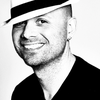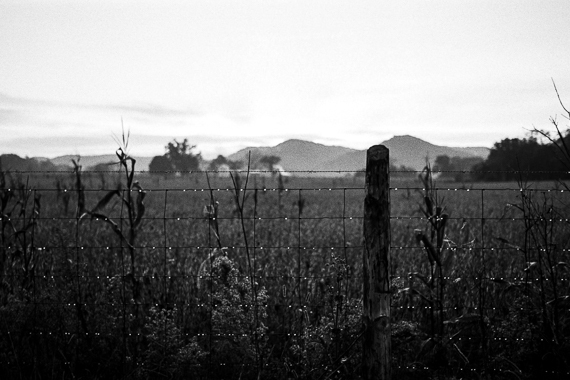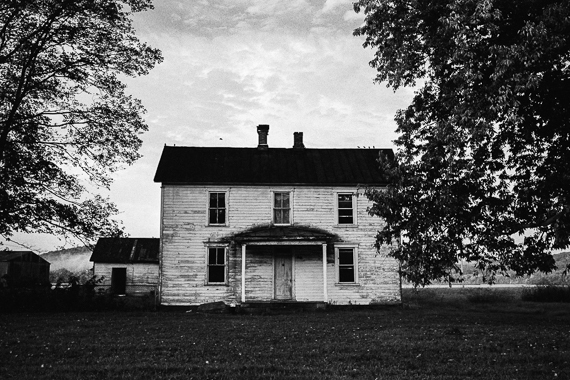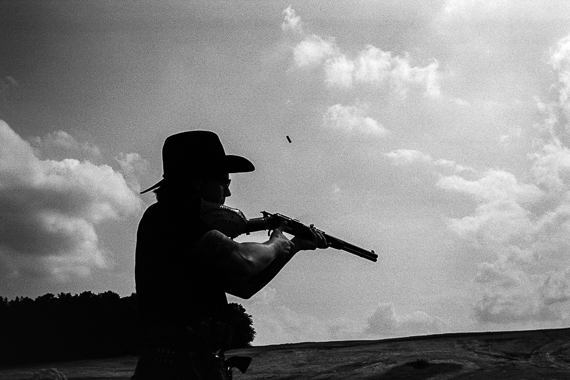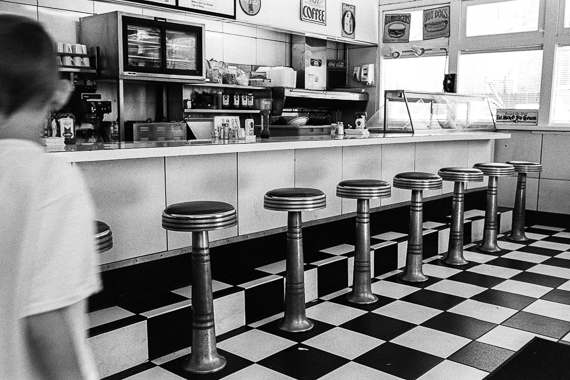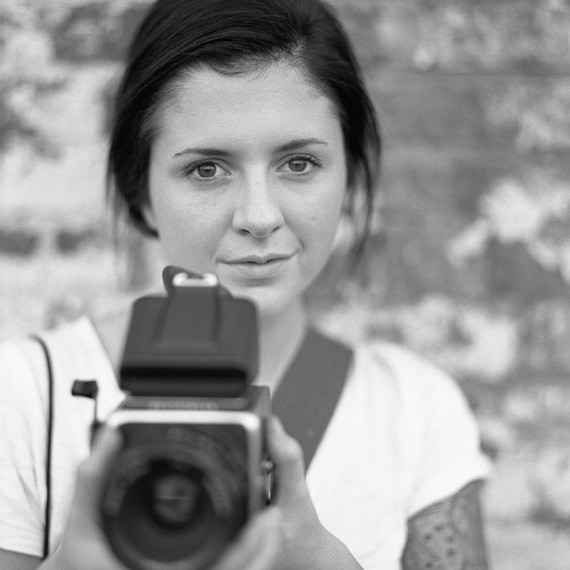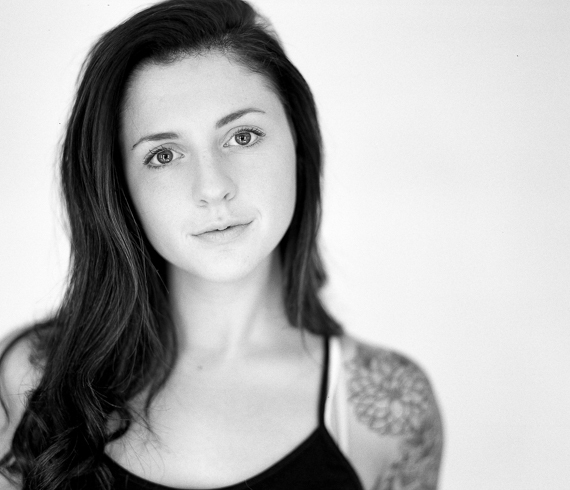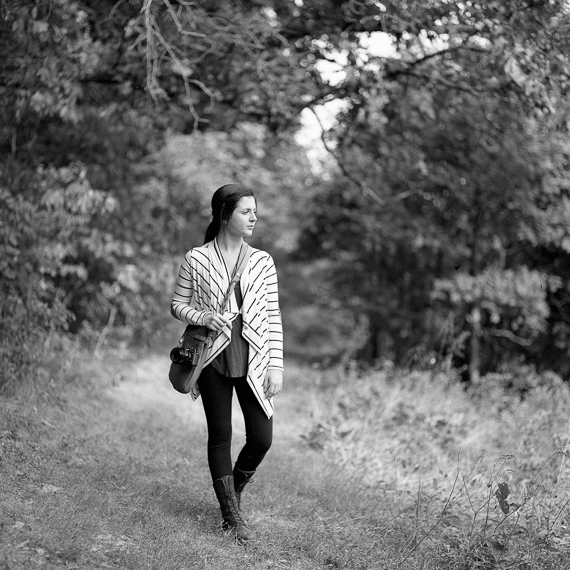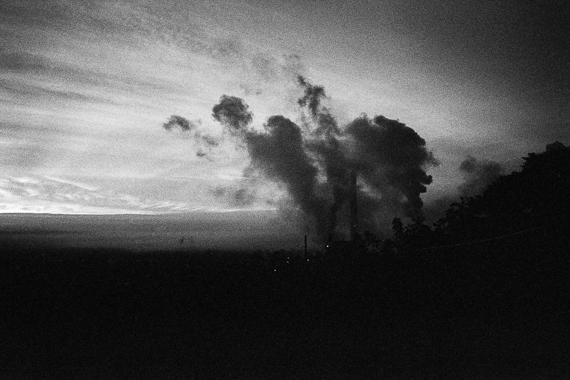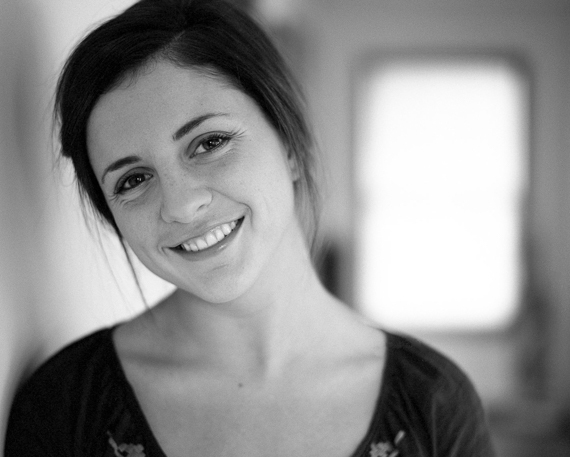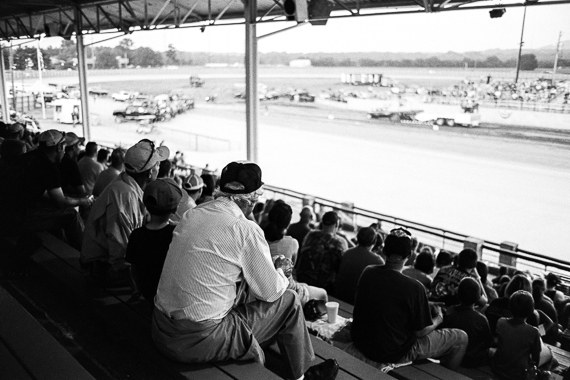I found Matt Day on YouTube. Well, not literally, but I did find some great film photography videos and they were hosted by Matt. This is not what attracted me to the idea of featuring him though, for that I would become drawn in by his pure passion for photography and his utterly unpretentious approach to promoting his own work. Matt is a real photographer and a real gentleman - either makes him a great choice for a feature, and the two combined make it a no-brainer.
Michael Ernest Sweet: Matt, let's begin by talking about your new book, Friend of Mine, coming soon from Blurb. I'm exclusively a book photographer. I have literally three photographs available in print in a gallery in Paris and that's it. I love books. I guess because I'm also a writer. I also love to photograph with the "book" in mind, rather than the print. Its become part of my technique - part of the way I work. What is it that has drawn you, as a photographer, to the bookmaking process?
Matt Day: I think the idea of giving these images a home is what was so appealing to making a book. You can show any photos you want through social media but then delete them whenever you want. Putting a physical collection like this out there, you can't just delete them. There's a sense of vulnerability one feels by doing so. You have to commit to an entire body of photos. That's a strong feeling.
MES: In photography, self-publishing has a long history. Some very famous photographers of the twentieth century published their own artist books. That is, it's not like literature, for example, where self-publishing is frowned upon. Do you plan to continue on the self-publishing "artist book" path, or do you see yourself using this book as a maquette to approach traditional publishers?
MD: I wouldn't say that approaching traditional publishers is out of the question for the future, but I do plan on focusing on self-publishing for future projects. I like the idea of doing things myself. Being a skateboarder since I was 14, I've always gravitated towards the DIY mentality of things.
MES: Photographing the familiar is one of the most difficult "things" to photograph. We have to approach it with new eyes - those things we know so well. With this body of work, which is primarily your community - hometown - we see, perhaps, something different from what you see. This can make a project like this very challenging. What do you see in these photographs - the familiar and banal or, more like us, something intriguing and unknown?
MD: The idea of a book came long after I had already made the majority of these photos. I would go out and shoot around my hometown just because I love it here and I love making photos. Eventually, I started to see a consistency in the photos and realized that some of them worked really well together. The consistency, for me, is the feeling. I see the way I feel about Chillicothe in my photos. Others may view the town completely different from me and I think these photos are going to show that. They're not going to see Chillicothe as they know it when they look at my photos. That's ultimately been the goal for producing a book - to show others the way I see my town.
MES: Why film?
MD: It's where my passion in photography lies. Not just the look of film, which is inherently different (not better or worse, just different), but the process is what really draws me in. Shooting, processing, scanning, printing, all of it. It gets out of the way and makes things easier for me, while also allowing me to be so much more hands on. There's no other way for me to shoot and get the same results.
MES: I own an M6 but, quite frankly, find it too heavy to carry around. I've replaced it with a couple MJU IIs from Olympus. Leica fans will kill me for that statement. However, in all seriousness, I'd like to see people distinguish the negatives. That is when the MJU is properly exposed etc. It makes fantastic negatives. Some people could tell them apart, most could not. That aside, I do want to know what it is about the M6 which beckons you in? What has caused it to be your primary camera?
MD: I know what you mean! I have the Stylus Epic from Olympus, which is the same as the MJU II essentially, same lens and everything. That one is always in the bag. Sharp, compact, easy, and reliable. As for the M6, that's my primary camera for a number of reasons. I love rangefinders. I prefer almost everything about them over an SLR. I love that the M6 is fully manual. With each photo, it's up to me, not the camera, to properly expose things and focus. Automatic features can make you lazy. There's enough automation in the world right now. I don't want it touching my photography. I'm a fan of Leica glass, both classic and modern, so that's another advantage of an M. Last but not least, it's a Leica. If you've ever used one, you'll understand they're something special. Believe the hype!
MES: Ah, a good ole Leica boy. I'll let you get away with that for now. Back to the book, one of the most important aspects of making a good photo book is great editing. Often, we, as the photographer, get emotionally attached to the image and the time and place where we made it. This makes it difficult for us to examine our own photography with objective eyes. Perhaps this is what has lead self-publishing to suffer a bad reputation. Tell us about how you've edited this book, who was involved?
MD: Editing is tough. I have a tendency to over-analyze things. With the book and the amount of negatives to sort through, I knew it would be easy for me to let it get the best of me. My plan was to go with my gut through the entire process. In one day, I went through all of my negatives, scanned in the possible keepers, and started laying out the book from there. Overall, it was about 12 constant hours of work, but when I was done, I was done. I didn't second guess myself and I didn't leave room for changes. I stuck with what I had for the sake of my sanity. That will either pay off or bite me in the ass. We'll see when people get their hands on the book. When I had everything finished and had the book in a PDF file, I had my wife, Molly, look it over and give me her honest feedback. Molly knows me better than anyone. She knows what I'm going for and she's not afraid to voice her opinion, believe me. Some would think that's not a smart move, as if she would be biased while viewing the book, and maybe she was. But that's how I did it and I'm happy with it.
MES: Switching gears a little, I'd like to now talk to you about photographing the significant other. In your case, your wife, Molly. Again this is a process which becomes highly subjective in a hurry. How do you not only edit these images, but compose and take them also? That is, how do you work with a model which you have such a personal relationship with and see any image as less than perfect?
MD: It's funny that you mention this and ask these questions. I've honestly never even thought about how I photograph my wife so much. I assumed every photographer did this, but maybe not. I shoot photos of her literally every day. Sometimes it's a thought out and posed portrait of her whenever I find some nice light and sometimes it's when she's laying on the couch with the dogs. I photograph my life, every day of it. She's with me all of the time, so naturally I'm gonna have a lot of photos of her.
MES: Why photograph your wife?
MD: She's my best friend and she's gorgeous. Makes the answer pretty easy!
MES: Do you work with other models or just Molly and street photography?
MD: I don't work with actual models or anything like that, but I do work with other subjects, you could say. My career is in photography. I shoot portraits for a living. Everything from weddings to senior portraits to families to children, you name it. Working with people is great because you get to meet so many different people and I've made some very close friends through photographing them. Portraits are important, no matter the occasion; they live longer than we do.
MES: As you seem to do most of your work on film, how do you process and print? Is this all done by you or do you send work out?
MD: It depends on the film and what it's being used for. If it's for a client, their film gets sent out to a professional lab in Lousiville where it will be processed and scanned. If it's personal work, which is basically all black and white, I develop it at home and print myself in my darkroom. It's sad to know how many photographers there are out there that will never get to experience what it's like to use a darkroom. No matter how many prints I make, it still blows my mind every single time.
MES: How did you get into photography in the first place?
MD: It's somewhat of a long story, but I'll try to be brief. When I was 13, my older brother, who was 17 at the time, was working on a local farm and was attacked by a bull. The bull flipped him into the air and when he landed, he landed on his neck, paralyzing him from the chest down. He was in the hospital, OSU Hospital in Columbus, for a few months, in and out of intensive care. While this was going on, my mom stayed with him at the hospital and my dad was working on building a handicap accessible room onto our house with the help of our community. I was staying with friends and family at the time because school was still going on, so I would really only see my brother and my parents whenever we would drive up to see them at the hospital in Columbus. During those months, my aunt and uncle flew up from Florida to see my brother. They brought a camera with them that they had bought for me. They realized I wasn't seeing my family much at the time, so they told me to document what I was doing in that time so that I could show them the photos and keep them up to date, so to speak. They also told me to document my brother's recovery. So that's what I did and I just never stopped. Still documenting every day.
MES: That's a great and touching story. Perhaps those photographs of your brother, when the time is right, will also make a powerful book. What does the act of making photographs do for you on an inner level?
MD: Like I mentioned before, I photograph my life. The exciting and unusual days and even the days spent at home on the couch with my family. No matter the subject, making photos helps me remember how important life and our time that we have is. It reminds me that I'm in the moment and that this is nothing to take for granted. That's why photos are important - because life is.
MES: I like your film photography show on YouTube. It's honest and unpretentious and fun. How did this come about and what are your plans for the show?
MD: Thank you! I'm not the most comfortable person in front of the camera, but I'm working on that. I've always wanted to create a YouTube channel for film photography because there's a huge lack of content in that community. There are a few good channels that I'm subscribed to, but like I said, I like the DIY way of things. None of the channels were what I was looking for, so I figured I would make it myself. I knew there had to be a ton of other film photographers that were looking for this sort of content as well, so I went for it! I'm about 4 months in and I've had great response from people. I'm really thankful for the support and really glad that people seem to be enjoying it and learning from it. I have a lot of plans for this winter, which is my slow season for work. I have a lot of future episodes and topics to discuss, but some general plans mainly include interviews. I'd love to get some other photographers involved so that it's not just me on every episode.
MES: Matt, thank you very kindly for taking the time to talk with us. I wish you all the best with these projects and do stay in touch. And, congratulations on that new addition to the family - I expect we'll be seeing photos!
MD: Thank you for the opportunity! Its been an honor to talk with you.
Matt Day is a 23-year-old photographer from Chillicothe, Ohio, and he loves film. He a wife, Molly, two rad dogs, and a baby on the way! Follow him on Twitter and Instagram @MattDayPhoto or through his YouTube Channel.
Michael Ernest Sweet is an award-winning Canadian writer and photographer.
